Irregular Plurals | English Grammar Class 5 PDF Download
Irregular Plurals
Certain words do not follow the rules for regular plurals. You'll find some words with no plural form at all. Since there is no way to know which nouns have an irregular plural, you have to memorize them. Explore a few different types of irregular plural nouns without a plural form.
Non-Count Nouns
Non-count nouns are used as collective nouns and have no plural form because they are assumed to be plural. Most abstract nouns are noncount nouns. A few examples of noncountable plural nouns include:
- hair
- grass
- mud
- dress (when referring to a style of dress, not when referring to a clothing item that hangs in your closet)
If you are talking about multiples of these irregular plurals, you cannot make them plural by adding an “s” or “es” to the end. Instead, you need to make them plural by adding a descriptive phrase.
- There are many different styles of hair.
- There are several varieties of grass.
- There are three different kinds of mud.
- The ancient people had a few types of styles of dress.
Unchanging Nouns
Certain other nouns have the same singular and plural form. A large number of animals happen to follow this rule. These examples will be spelled the same.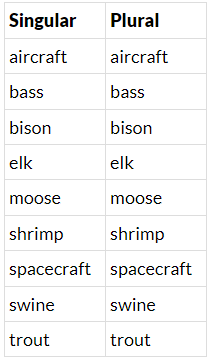
Irregular Plurals That Change Ending
In addition to non-count nouns and unchanging nouns, several types of irregular plurals follow a pattern in the English language. Explore examples of different endings and how they change, along with irregular plural nouns that change completely.
Nouns With -f or -fe Endings
For most nouns that end in "f" or "fe," you drop the "f" or "fe" and add "ves."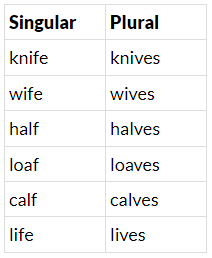
Exceptions to this rule include roof and proof, among others. These will get an “s” on the end, as in roofs and proofs.
Nouns Ending in -us
For many words that end in “us,” change the “us” to an “i” (especially if it comes from a Latin word). There are exceptions to this rule, and it’s becoming more acceptable to add “es” instead of changing to “i” in some cases.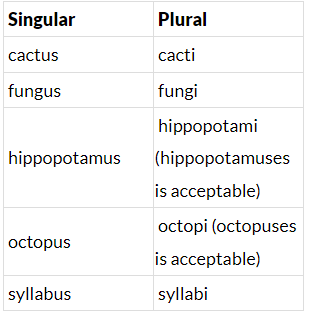
Nouns With -o Endings
For nouns that end in “o,” you add either “s” or “es.” Generally, most nouns ending in “o” just add “s” to make the plural, especially if there's a vowel before the final “o.” However, you'll also find words that work with both endings.
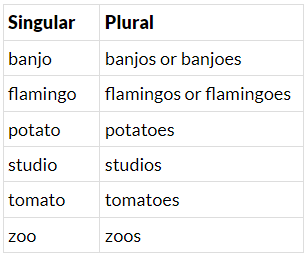
Words With -is Endings
For many words that end in “is,” change the “is” to an “es.” Check out a few examples.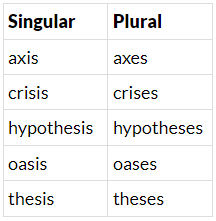
Nouns With -um Endings
Nouns that end in "um" often become plural by changing “um” to “a.” See how this looks in action here.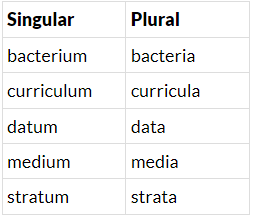
Nouns With -ix Ending
Another irregular plural noun ending that changes is “ix.” In Greek and Latin words, this will change to “ces” or “xes.”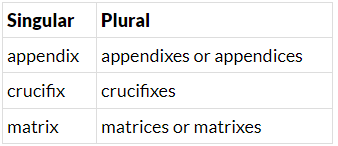
Words that Change Form
Certain words do not add a letter to the end to become plural. Instead, these irregular plurals change the word itself. These words simply need to be memorized.
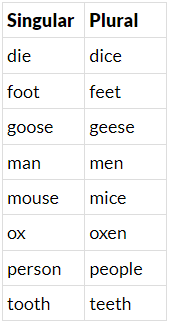
Regular Plurals
Now that you’ve seen irregular plural nouns, it’s important to review how regular plural nouns work. The general rule for making a noun plural is that if the word ends in "s," "x," "z," "ch" or "sh," add an "es." Review a few examples of what this might look like.
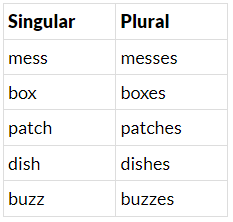
Add an S
For all other non-irregular nouns, simply add an "s" to the end of the word.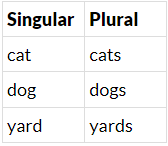
Exceptions to Regular Plural Rules
An exception to the add an "es" rule is if the "ch" ending is pronounced with a /k/ sound, you add "s" rather than "es."
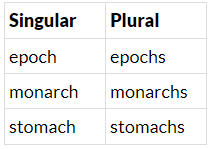
Vowel Endings
If the word ends in a consonant (all letters except a, e, i, o, u) plus "y," then change the "y" to an "i" and add the letters "es."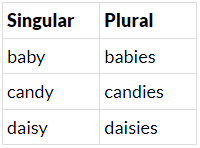
|
37 videos|529 docs|53 tests
|
















